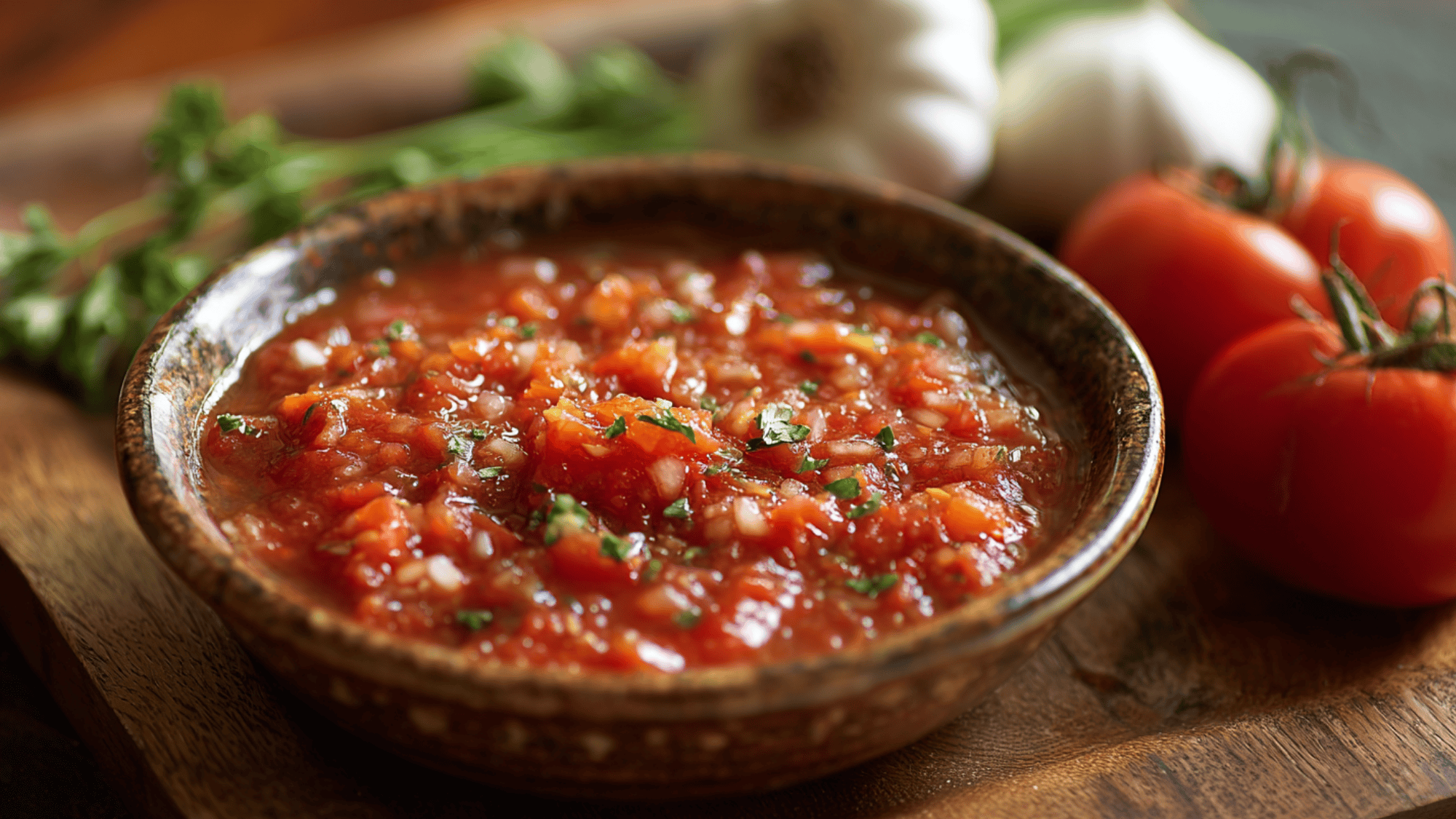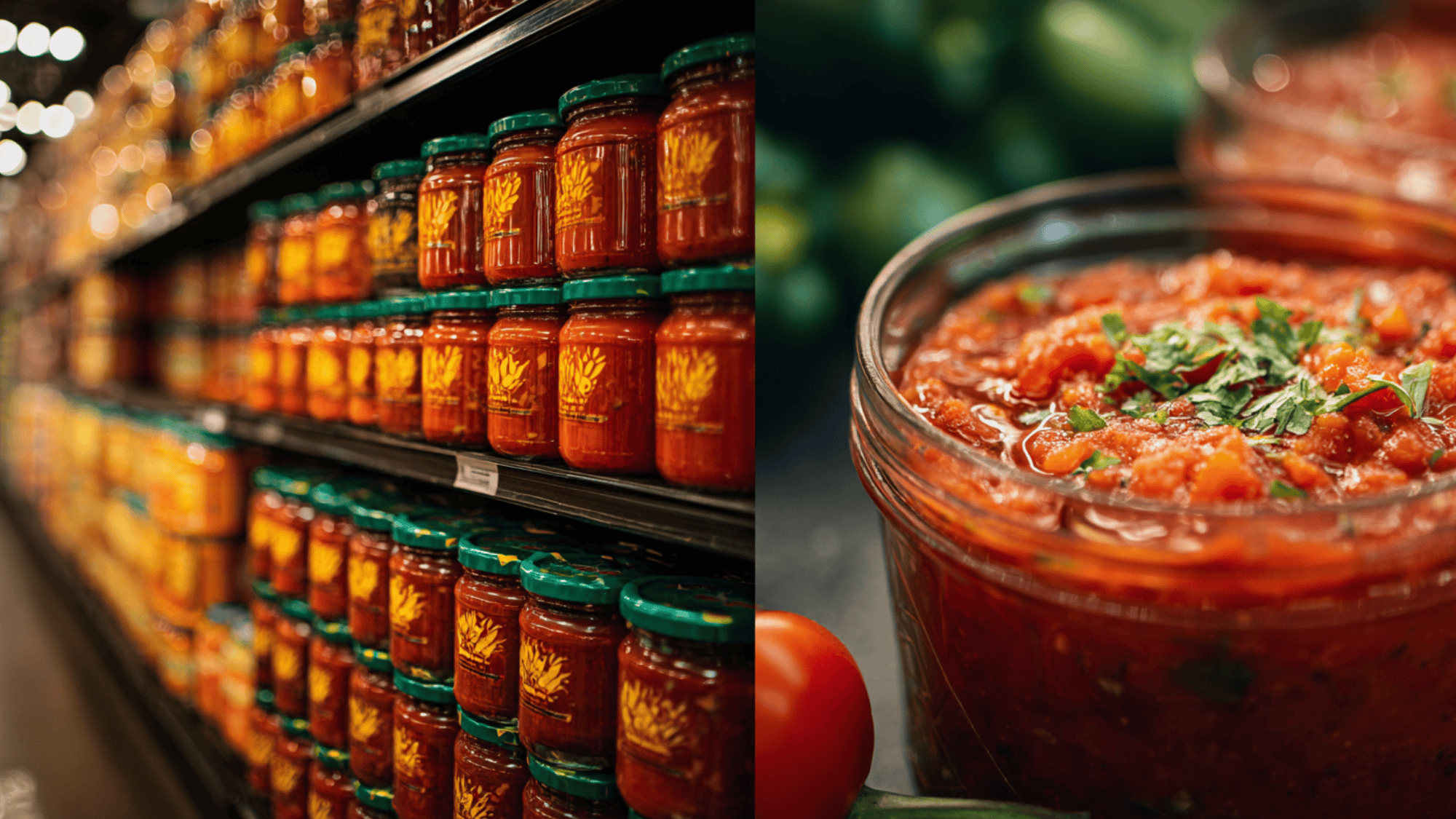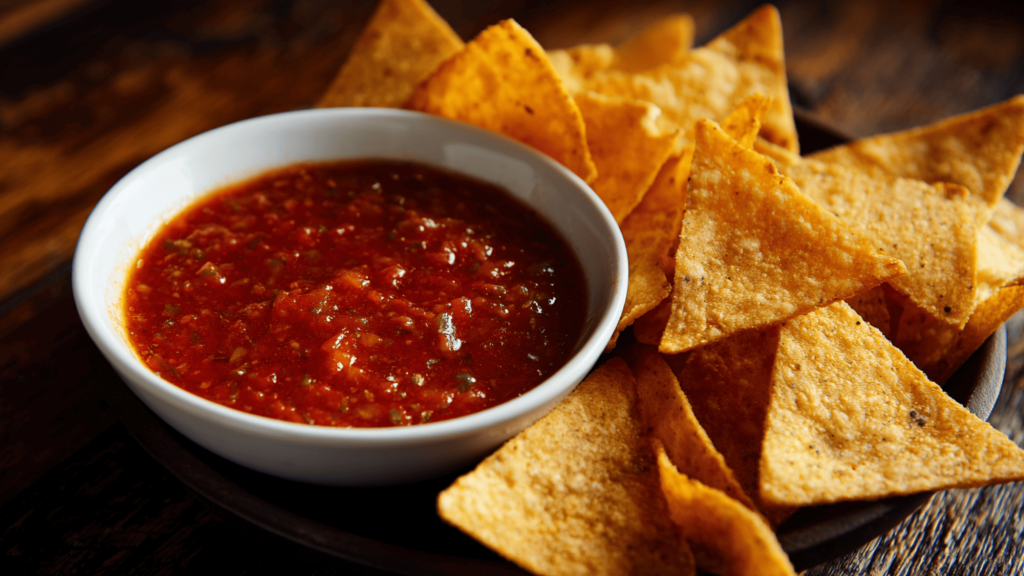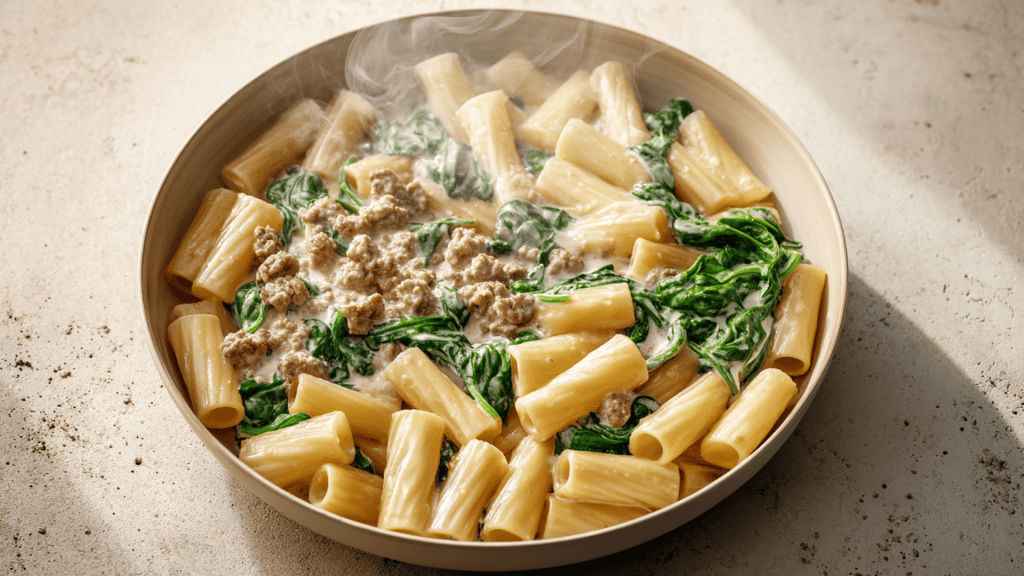If you’ve ever dipped a chip into a bowl of salsa, you’ve probably wondered, Is salsa good for you or just a tasty sidekick to tacos.
The truth is, salsa is more than a flavorful topping; it’s often made from fresh vegetables like tomatoes, onions, and peppers, all of which are rich in important nutrients.
When you take a closer look at salsa nutrition, you’ll notice it’s typically low in calories, low in fat, and loaded with vitamins and antioxidants.
Of course, not all salsas are created equal. While homemade versions can be incredibly wholesome, some store-bought options may hide extra sodium or preservatives.
Is Salsa Good for You?
Salsa is generally a healthy food choice, thanks to its fresh, nutrient-rich ingredients, including tomatoes, onions, peppers, cilantro, and lime juice.
These vegetables are naturally low in calories while offering important vitamins, minerals, and antioxidants such as vitamin C, potassium, and lycopene, which support heart health.
Salsa is also hydrating, high in fiber, and typically free from added sugars or unhealthy fats, making it a light yet flavorful condiment.
However, not all salsas are equally healthy. Store-bought or restaurant versions can contain excess sodium, preservatives, or added sugars.
Overall, salsa is a good choice for you, especially when made fresh at home or selected in low-sodium varieties, providing a tasty and nutritious way to enhance meals.
Common Salsa Styles and What They Offer
Not all salsa is the same, and the type you choose can make a difference in both taste and nutrition. The most common version is pico de gallo, a fresh mix of tomatoes, onions, cilantro, and lime juice.
It’s light, crunchy, and packed with vitamins. Cooked tomato salsas, whether roasted or simmered, bring out richer flavors and provide more lycopene, a powerful antioxidant.
For a sweeter twist, fruit-based salsas, such as mango or pineapple, add natural sugars, fiber, and vitamin C.
Finally, there’s store-bought salsa, which is extremely convenient but may contain added sodium, sugar, or preservatives.
Understanding these varieties helps you decide what works best for your diet and health goals, making salsa more than just a dip; it’s a flexible, nutrient-packed condiment.
Salsa Nutrition Facts at a Glance
Salsa isn’t just a tasty topping; it’s surprisingly light and full of nutrients that support your health.
Unlike creamy dips or heavy sauces, it’s naturally low in calories and fat while packing in plenty of vitamins and antioxidants. Here’s a simple breakdown of what you’ll typically find in a two-tablespoon serving:
| Nutrient | Amount (per 100g) | Why It Matters |
|---|---|---|
| Calories | 36 kcal | Low-calorie, great for weight management |
| Fat | 0.2 g | Almost fat-free compared to creamy condiments |
| Sodium | 670 mg | Can be high in packaged versions |
| Carbohydrates | 7.3 g | Provides quick energy from natural veggies |
| Fiber | 1.5 g | Supports digestion and fullness |
| Vitamin C | 11 mg | Boosts immunity and skin health |
| Potassium | 300 mg | Helps regulate blood pressure |
| Lycopene | Present (varies) | Antioxidant linked to heart health and cancer protection |
As you can see, salsa offers numerous benefits in a small serving size.
The key is focusing on versions made with fresh vegetables and being mindful of sodium levels, especially with jarred options. When chosen wisely, salsa is one of the healthiest condiments you can add to your meals.
Health Benefits of Salsa You Shouldn’t Miss

Salsa isn’t just about flavor; it’s one of those rare condiments that can actually boost your health.
Thanks to its fresh vegetables, antioxidants, and spices, salsa offers a range of health benefits, including support for heart health and digestion.
Here are some of the top benefits you get when you add salsa to your meals:
1. Supports Heart Health
Tomatoes in salsa are rich in lycopene, a powerful antioxidant that may help lower bad cholesterol and reduce the risk of heart disease.
Combined with potassium from onions and peppers, salsa can help regulate blood pressure. When enjoyed regularly, salsa becomes more than a condiment; it’s a heart-friendly addition to your diet.
2. Helps Manage Blood Sugar
Salsa is naturally low in sugar and high in fiber, which slows down digestion and prevents sudden blood sugar spikes.
This makes it a smart choice for individuals managing diabetes or seeking to maintain steady energy levels. Unlike sugary sauces, salsa delivers flavor without affecting blood glucose levels, making it both tasty and practical.
3. Boosts Metabolism and Weight Control
The chili peppers in salsa contain capsaicin, a compound linked to a slight boost in metabolism. Capsaicin may also help curb appetite, making you feel fuller for a longer period.
Since salsa is low in calories, it’s a satisfying way to season food without adding extra fat, supporting healthy weight management while keeping meals exciting.
4. Provides Hydration and Anti-Inflammatory Benefits
Salsa is primarily composed of water-rich vegetables, such as tomatoes, peppers, and onions, which help keep you hydrated.
Additionally, vitamin C and other antioxidants help combat inflammation, thereby protecting cells from damage.
If you’re recovering from exercise or simply aiming to incorporate more nutrient-dense foods into your diet, salsa is a refreshing and nourishing option for daily meals.
5. Aids Digestion and Gut Health
With a healthy dose of dietary fiber, salsa supports smooth digestion and helps prevent constipation.
The combination of vegetables also nourishes beneficial gut bacteria, which play a crucial role in maintaining overall digestive balance.
Eating salsa regularly can naturally improve your digestive health, making it more than just a flavor booster for your favorite dishes.
Potential Drawbacks & Things to Watch
Depending on how it’s prepared or purchased, certain factors can turn this nutrient-packed dip into something less friendly for your health.
- High Sodium Levels – Many store-bought salsas contain high amounts of salt, which can raise blood pressure if consumed too frequently.
- Spicy and Acidic Ingredients – For individuals with acid reflux or sensitive stomachs, ingredients such as chili peppers, onions, and lime juice may cause discomfort.
- Added Sugars and Preservatives – Some jarred versions contain sugar, artificial flavors, or preservatives, which can reduce salsa’s natural health benefits.
- Food Safety Concerns – Fresh salsa can spoil quickly if not refrigerated and may pose a risk of bacterial growth when left out for too long.
Overall, salsa remains a healthy condiment; however, being mindful of sodium, additives, and storage practices ensures you reap the benefits without the drawbacks.
Store-Bought vs Homemade Salsa: Which Is Better for You?

Salsa can be a nutritional powerhouse, but where it comes from makes a big difference.
Homemade salsa often highlights freshness and control over ingredients, while store-bought options trade convenience for a few compromises.
| Aspect | Homemade Salsa | Store-Bought Salsa |
|---|---|---|
| Freshness | Made with fresh vegetables; nutrient content is higher | Often pasteurized or jarred, reducing some nutrients |
| Sodium Content | Easy to control; add as little salt as you like | Can be high in sodium, sometimes over 600mg per serving |
| Additives | Usually free from preservatives and artificial flavors | May contain sugar, preservatives, or flavor enhancers |
| Flavor | Fresh, customizable, and vibrant | Consistent, but often less bright and fresh-tasting |
| Convenience | Requires chopping and prep time | Ready to use straight from the jar |
| Shelf Life | Short; must be eaten within a few days | Long; lasts weeks or months unopened |
In short, homemade salsa offers maximum freshness and control over what goes into your body, while store-bought salsa prioritizes convenience.
For the healthiest option, make your own when possible and reserve store-bought versions for days when you’re short on time. Just remember to read the label carefully.
Delicious and Smart Ways to Enjoy Salsa
Salsa isn’t just for dipping chips; it’s one of the most flexible condiments you can keep in your kitchen.
With its mix of fresh vegetables, spices, and zesty flavors, salsa can brighten up everyday meals while adding valuable nutrients. Here are some smart ways to enjoy it:
|
Top Your Breakfast – Spoon salsa over scrambled eggs, omelets, or avocado toast for a fresh kick. Upgrade Tacos and Wraps – Use salsa instead of heavy sauces for lighter, tastier fillings. Pair with Grilled Foods – Add salsa to grilled chicken, fish, or roasted vegetables for a flavor boost. Healthy Salad Dressing – Mix salsa with a little olive oil or yogurt for a quick, low-calorie dressing. Snack Smarter – Dip veggie sticks, baked tortilla chips, or whole-grain crackers into salsa instead of creamy dips. |
Salsa can easily replace higher-calorie condiments without sacrificing taste. By thinking beyond chips, you’ll find endless ways to add this nutrient-packed condiment to your meals while keeping them both healthy and satisfying.
Final Thoughts: Is Salsa a Healthy Choice?
So, is salsa good for you? The answer is a resounding yes, especially when it’s made fresh with wholesome vegetables and herbs.
Salsa delivers a wealth of nutrients, including vitamin C, potassium, fiber, and antioxidants, while remaining low in calories and fat.
Store-bought versions can be higher in sodium or contain additives, so it’s always a good idea to read labels or make your own at home.
If you’re topping tacos, brightening your breakfast, or swapping it for heavy dressings, salsa is a simple way to boost both flavor and nutrition in your meals.
Ready to try it yourself? Start by making a fresh batch at home and see how salsa turns your dishes into something healthier and tastier!


























